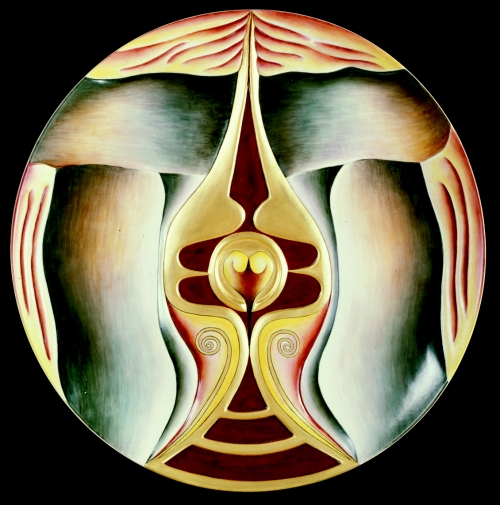Celtic birth imagery in Judy Chicago’s “Boadaceia”

Boadaceia place setting (detail from The Dinner Party), mixed media
Copyright 1974-79, Judy Chicago, All Rights reserved.
This detail from The Dinner Party, Judy Chicago’s large-scale iconic feminist installation of the 1970s, represents a place setting for Boadaceia, a Celtic queen and warrior who lived during the first century. Chicago’s entire installation is massive, comprising 39 place settings, each celebrating an important woman from history.
The place setting for Boadaceia utilizes Celtic imagery and includes the familiar shape of a monument from the prehistoric site of Stonehenge in England. Curators at the Brooklyn Museum’s Elizabeth A. Sackler Center for Feminist Art describe the central form on the setting as a golden helmet decorated with Celtic patterns, symbolic of Boadaceia the warrior.
The entire curvilinear form of the place setting, however, is also reminiscent of birth imagery. The central shape looks uterine and encompasses a small form similar to an embryo. Visualizing Birth has previously discussed imagery used for birth in Celtic traditions (see Visualizing birth and Celtic birth and mothering knots).
Chicago’s Boadaceia could also be useful to pregnant women as they labor or prepare for labor as an opening device, similar to how blooming flower visualizations or cave openings are used in birth as a rite of passage.